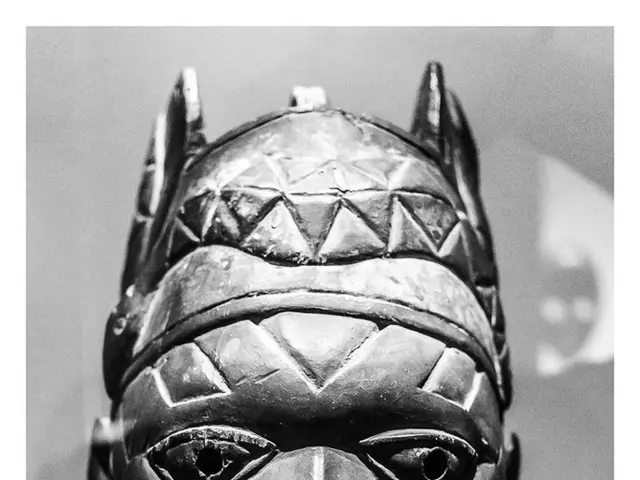Distinguishing Age Spots from Skin Cancer: Recognizing the Differences
AI-Generated Article:
Shedding Light on Age Spots and Skin Cancer
As we age, our skin might develop some unwelcome guests, such as age spots or skin cancer, which could make us worry about our health. While these issues might seem similar, there are distinct differences that you should know. Let's delve into the world of age spots, skin cancer, and actinic keratosis, hopefully bringing some clarity to your concerns.
The Importance of Recognizing Differences
Understanding the differences between age spots and skin cancer can empower you to seek professional help if needed, fostering early detection and treatment, thereby enhancing your overall health. Key distinctions entail texture, color, and location.
Aging Gracefully - Age Spots
Age spots, also known as solar lentigines or liver spots, are harmless, dark patches on the skin that develop due to sun exposure over time. They tend to emerge from middle age onwards and are characterized by their:
- flat, smooth texture
- tan, brown, or gray color
- well-defined edges
- size ranging from a few millimeters to centimeters
- prevalence on sun-exposed areas, such as the face, hands, arms, back, and shoulders
- potential for fading in winter and becoming more pronounced in summer
Skin Cancer - A Hidden Danger
Skin cancer occasionally masquerades as age spots, owing to its sun-induced origins. Skin cancer is a genuine health threat that can spread if not addressed promptly.
- Skin cancer commonly occurs on sun-exposed areas due to exposure to UV radiation from the sun or tanning beds.
- When compared to age spots, skin cancer signs and symptoms may include:
- asymmetrical shape
- irregular, ragged edges
- changing size, color, or shape
- multiple colors on the same spot
- pink, blue, purple, black, or brown coloring
- raised, red patches
- pale or yellow firm patches
- pain, itching, oozing, or bleeding
- crusty or scaly patches
- raised edges that lower in the middle
- Actinic keratosis is another skin condition that shares some similarities with age spots, but it represents a precancerous growth.
Watchful Waiting - When to Consult a Doctor
As a rule of thumb, it's in your best interest to consult a healthcare professional if you observe any unusual changes to the skin, such as:
- new marks that don't heal within 4 weeks
- marks that itch, crust, or scab over
- marks that change in color, shape, size, or location
- marks that look different from other marks on the skin
Seeking Professional Diagnosis
A doctor might carry out a physical examination to diagnose age spots and evaluate whether they're distinguishable from other conditions. If further assessment is required, a skin biopsy may be performed for thorough analysis.
The Path to Healing - Treatment Options
Treatment for age spots is generally cosmetic, catering to individuals who seek a less patchy complexion. Various methods are available, including:
- topical creams
- laser treatments
- cryosurgery
- microdermabrasion
- chemical peels
Treatment for skin cancer depends on the type and stage of the cancer. Common treatments include surgery (e.g., Mohs surgery), radiation therapy, and chemotherapy.
Embracing Awareness
By arming yourself with this knowledge, you can gain greater control over your skin's health. Although age spots and skin cancer share commonalities, distinguishing between the two can spell the difference between peace of mind and proactive skincare.
- Seniors, specifically as they age, may notice the emergence of age spots or skin cancer, creating concerns about their health.
- Age spots, also known as solar lentigines or liver spots, are harmless, dark patches that develop due to sun exposure over time, typically happening in middle age and beyond.
- Unlike age spots, skin cancer is a serious health threat that can spread if not treated promptly, and it often arises on sun-exposed areas due to UV radiation exposure.
- Age spots are characterized by their flat, smooth texture, tan, brown, or gray color, well-defined edges, and size ranging from a few millimeters to centimeters.
- Signs and symptoms of skin cancer might include an asymmetrical shape, irregular, ragged edges, changing size, color, or shape, multiple colors on the same spot, and other various traits such as pink, blue, purple, black, or brown coloring, raised, red patches, pale or yellow firm patches, pain, itching, oozing, bleeding, crusty or scaly patches, and raised edges that lower in the middle.
- Actinic keratosis is another skin condition that shares some similarities with age spots but is precancerous.
- If you observe any unusual changes to your skin, such as new marks that don't heal or marks that changecolor, shape, size, or location, it'sbest to consult a doctor for further evaluation.
- Treatment for age spots and skin cancer may vary; while age spots are typically treated cosmetically, skin cancer treatment depends on the type and stage of the cancer, with options like surgery, radiation therapy, and chemotherapy.








